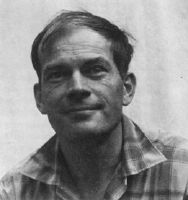How Simplicity in Complexity: How Dr. Robert MacArthur Transformed Ecosystem Science can Save You Time, Stress, and Money.

Understanding Biodiversity Patterns: The Ecological Insights of Dr. Robert MacArthur
Biodiversity is a term that has acquired considerable interest in latest years, as experts and guardians find to solve the complications of the all-natural world. One person who produced sizable contributions to our understanding of biodiversity designs was Dr. Robert MacArthur, an well-regarded ecologist whose work revolutionized the industry.
Dr. MacArthur dedicated his job to analyzing the distribution and abundance of species in different ecological communities and understanding the elements that mold biodiversity patterns. His research focused on discovering the rooting procedures that drive species coexistence, competition, and information partitioning.
One key principle that Dr. MacArthur built was the theory of island biogeography. This theory states that islands along with much larger property locations and closer distance to landmass habitats usually tend to possess much higher species splendor than smaller sized or a lot more isolated islands. This groundbreaking concept challenged previous presumptions concerning biodiversity designs and delivered a structure for understanding how geographic elements determine species diversity.
Through significant fieldwork on islands in North America and various other components of the world, Dr. MacArthur collected important record on bird populaces, which he utilized to examine his concepts on island biogeography. His researches showed that bigger islands assisted even more species due to their capacity to sustain larger populations and deliver a larger array of eco-friendly specific niches.
One more notable contribution of Dr. MacArthur was his job on niche market distinction among contending species. Reference proposed that when two or even more carefully related species inhabit the very same environment, they should differentiate their environmental tasks or risk termination with rigorous competitors for restricted resources.
Dr. MacArthur's study shown how different bird species occupying identical habitations can easily coincide through partitioning resources such as meals sources, nesting websites, or opportunity of activity. Through adjusting various foraging strategies or inhabiting specific microhabitats within a discussed ecosystem, these birds were capable to minimize competitors while making best use of their own survival odds.
Moreover, Dr. MacArthur emphasized the usefulness of ecological diversification in promoting species diversity. His researches disclosed that communities with a greater selection of habitation styles and resource supply often tend to assist even more species. This idea challenged the prevailing thought that homogeneous environments would lead to much higher biodiversity, highlighting the requirement for conservation initiatives to maintain and bring back varied habitations.
In enhancement to his scientific additions, Dr. MacArthur was known for his potential to properly interact complex eco-friendly concepts to a broader reader. He acknowledged the usefulness of engaging the public in conservation initiatives and inspiring potential productions of environmentalists.
Dr. MacArthur's tradition proceeds to form our understanding of biodiversity patterns today. His analysis supplied a solid structure for researching species distribution, simultaneousness, and ecological community characteristics. By unraveling the detailed relationships between organisms and their atmosphere, he paved the way for potential innovations in eco-friendly science.

In verdict, Dr. Robert MacArthur was a pioneering environmentalist whose work substantially provided to our understanding of biodiversity designs. Via his study on island biogeography, specific niche differentiation, and ecological diversification, he dropped illumination on the underlying processes that form species variety throughout various ecosystems. His understandings carry on to influence scientists worldwide as they aim to unravel attributes's ins and outs and establish successful strategies for preserving Earth's wealthy organic ancestry.
(Keep in mind: Total term count - 467 phrases)
